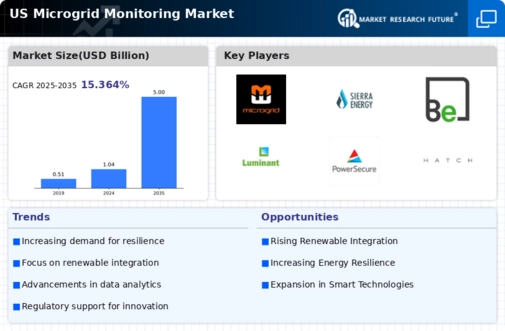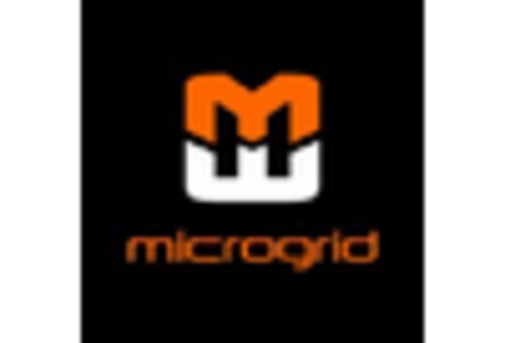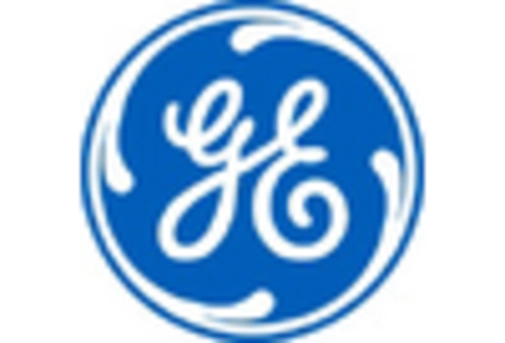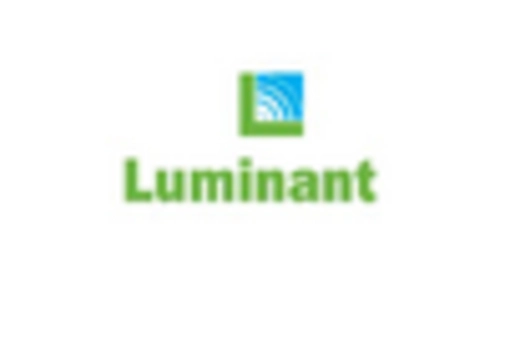The US Microgrid Monitoring Market has been rapidly evolving, driven by the increasing demand for reliable and sustainable energy solutions. As more individuals and businesses recognize the importance of energy independence and resilience, microgrid systems have gained significant traction. The competitive landscape is characterized by various players who offer advanced monitoring technologies and services tailored to enhance the efficiency and manageability of microgrid operations.
Companies in this space are engaging in innovative strategies, forming alliances, and leveraging technological advancements to capture market share and meet the unique needs of diverse consumers, which enhances the overall growth prospect of the market.Microgrid Energy has established a solid presence in the US Microgrid Monitoring Market, focusing on providing integrated solutions that streamline microgrid operations. The company's strengths lie in its advanced software platforms that allow for a user-friendly interface and real-time data analytics. This enables customers to optimize their energy management and enhance system performance effectively.
Furthermore, Microgrid Energy's commitment to sustainability and renewable energy integration aligns with the national objectives of reducing carbon emissions and promoting efficient energy use. The company’s expertise in renewable energy technology further solidifies its position in the market, allowing it to cater to a range of clients across various sectors, including commercial, industrial, and municipal.ABB is a key player in the US Microgrid Monitoring Market, recognized for its robust portfolio of products and services that support the development and management of microgrid systems.
The company excels with cutting-edge technologies in automation and digitalization, which allow for comprehensive real-time monitoring and management of energy resources.
ABB's strengths include a strong technological foundation that encompasses advanced energy storage solutions and seamless integration with distributed energy resources. The firm has bolstered its market presence through strategic mergers and acquisitions, enhancing its capabilities and expanding its reach in the sector. With continuous innovations and a strong commitment to sustainability, ABB remains a leader in providing comprehensive microgrid solutions that adhere to the evolving energy landscape in the US.























Leave a Comment